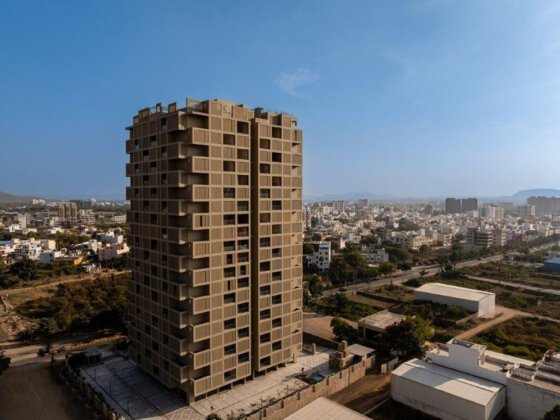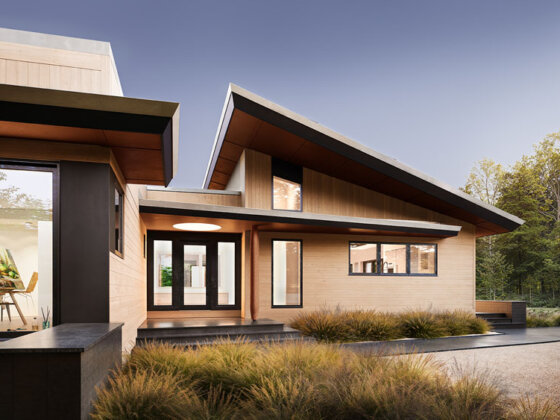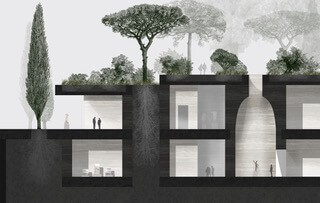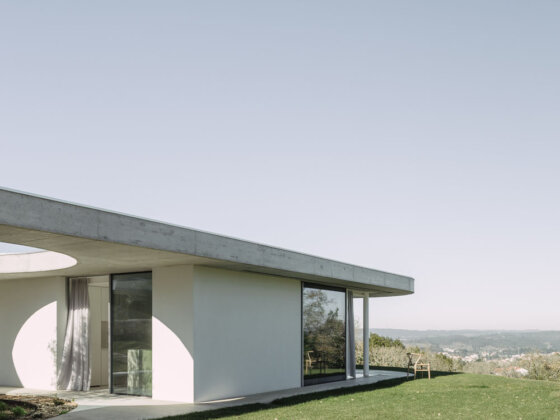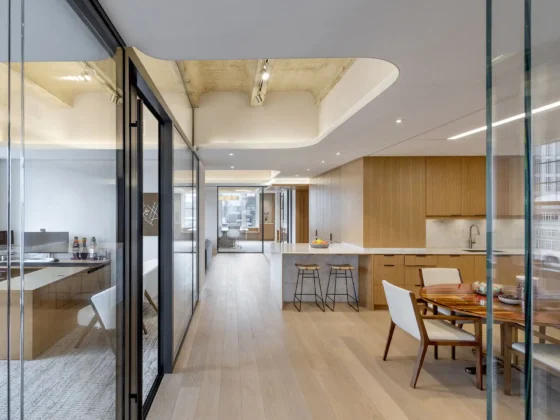Huizho, China
Paul Peng of IAPA Pty. Ltd. has designed The Village of Ancient Trees by the Water, a sustainable and ecological hotel for Kaisen Holding Group that resembles a village and takes inspiration from thousand-year-old trees.

Everything begins with nature, and everything returns to nature.
From ancient times to the present, urban life has not been the original form of habitation, it emerged after years of social and cultural evolution.
At the very beginning of human existence, trees and forests played an important part in people’s daily life.
For this reason, the design research started here, aiming to establish an architectural form that will reflect, redefine, and build alongside nature.
The Village of Ancient Trees by the Water has recently been awarded a 2022 Future House Award by The Chicago Athenaeum: Museum of Architecture and Design and The European Centre for Architecture Art Design and Urban Studies.

The hotel space is decomposed into “boxes” of various sizes of functions and themes, flexibly scattered among the ancient trees.
The trestle paves around the lakeside and penetrates into the surrounding mountains until the peak viewing platforms.
Different typologies include: Villa Guest House on the lakeside; Tree House floating in the tree gaps; Mansion House along the mountain ridge; Townhouse on the mountain slope.
The architectural forms rise and fall in response to the mountains.
The interior space concentrates on up-and-down vertical circulation, which not only emphasizes the “living in the trees” scenic experience but also has a minimal impact on the growth of surrounding plants.

Within the Mansion House, a number of ecological courtyards are placed inside.
The units are arranged around the ecological courtyard and aim to fully engage living with the environment.
The Townhouses are designed to adequately follow the hillside terrain, and the design concept of living space is a continuation of the local natural ecology.
The native plants are preserved and grow from the courtyards, combined with roof greening, enhancing the artistic scenery of the village.
Considering the hot summer weather of Huizhou, the use of natural energy is maximised in order to achieve a low-carbon lifestyle.
The overall design takes full advantage of natural wind and light, reducing reliance on electric lighting and air conditioning.

The design of large area window provides good natural lighting and ventilation.
Open courtyards help to reduce the air temperature of the room for the hot, humid climate.
Photovoltaic panel materials are used as the roof plate to capture the sun’s rays in the daytime and convert them into electricity.
Additionally, rainwater collection and wastewater recovery systems are installed for plant irrigation.
Green energy technology and the concept of centralized water recycling are used throughout the village.
By introducing tree-like forest walkways and inserting landscape nodes into the village house master plan, the design creates a story-telling scenery of village living.

Project: The Village of Ancient Trees by the Water
Architects: IAPA Pty. Ltd.
Lead Architects: Paul Peng
Design Team: Paul Peng, Xing Zhang, Chao Fang, Wenshan Zhang, and Shaoyao He
Client: Kaisen Holding Group
Images Courtesy of the Architects



